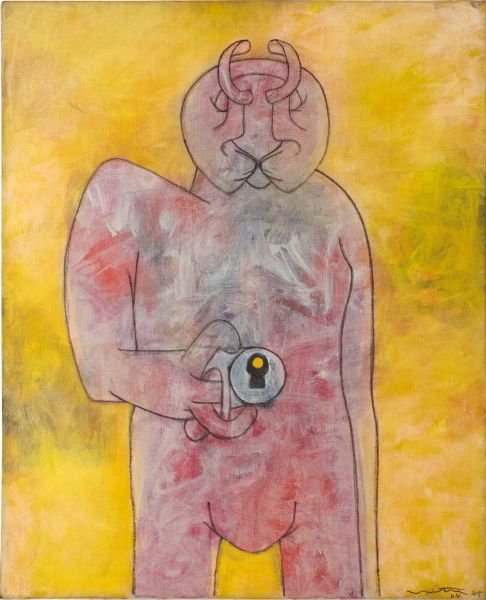Matta
dal 14/2/2011 al 30/4/2011
Segnalato da
Ivam Department of Communication
14/2/2011
Matta
IVAM Instituto Valenciano de Arte Moderno, Valencia
The year 2011 will mark the centenary of the birth of Matta. He continued working intensely until the end of his life, leaving a legacy of paintings, drawings, architecture and poetry that escape customary categories. They seek to involve the viewer completely in a personal world made up of space and time, communication, cosmic revolution and the life of human beings on earth, not forgetting the poetic nature and transformation of the unconscious and desire in his earliest works.

The year 2011 will mark the centenary of the birth of Matta, one of the most significant figures in twentieth-century art because of his importance as a member of the Surrealist group and his enormous influence on the development of American Abstract Expressionism, and above all because he was an absolute artist, a visionary and a precursor of the relationships of art, science and nature and the fundamental role of art in the complete development of the human being.
He was born in Santiago (Chile) on 11 November 1911, to a well-to-do family of Basque origin. He received his primary education from the Jesuits at the Sacred Hearts College in Santiago.
Later, at university, he studied in the School of Architecture. When he finished he travelled to Europe, where he met Le Corbusier and worked in his studio for several years.
Between 1935 and 1937 he travelled all over Europe, living for a time in Madrid. Through his family he made contact with the world of art and culture there, and he always remembered the enormous impact that Federico García Lorca made on him.
He worked on the design of the Spanish Republican Pavilion in the Exposition Internationale in Paris in 1937, where he met artists such as Picasso (who was painting Guernica), Miró, Magritte and Calder.
Through Dalí, and armed with a recommendation that he had been given by García Lorca, he met André Breton, who invited him to join the Surrealist movement in 1937. He published in the magazine Minotaure and took part in the famous Exposition Internationale du Surréalisme in 1938. During this period he met leading contemporary artists, among whom a privileged place was occupied by Marcel Duchamp, who became a decisive influence on his work and with whom he formed a friendship that lasted over the years.
In 1939 he moved to New York, where his works featuring biomorphic forms, his dazzling personality and the innovative ideas and techniques of his style made him the centre of attention for the painters of the New York School, including Robert Motherwell, Jackson Pollock, William Baziotes and Arshile Gorky, among others. His influence on the development of American Abstract Expressionism and his role as a bridge between European ideas about art and the new American art were decisive.
In 1948, after the breakdown of his relations with the Surrealists, he went back to Europe and settled in Rome. From then on, until his death, he travelled a great deal, living in Tarquinia (north-west of Rome), Paris and London.
In 1957 the MoMA in New York organised a retrospective of his work, which was also shown in Minneapolis and Boston. He presented many exhibitions throughout his life, including one held at the Centre Georges Pompidou in Paris in 1985, and his work is represented in the collections of the most prestigious museums in the world.
He always remained faithful to the social commitment of the engagé artist and was involved in the social movements of his time. He made several journeys to Cuba and in 1970 he visited various Arab countries and met artists and intellectuals there. He also painted for the Angola liberation movement. In 1972, at the invitation of President Allende, he returned to Chile, where he worked on collective murals and made many works in which he went beyond the description of social realities and succeeded in revealing “emotional structures”.
Matta continued working intensely until the end of his life, leaving a legacy of paintings, drawings, architecture and poetry that escape customary categories: They seek to involve the viewer completely in a personal world made up of space and time, communication, cosmic revolution and the life of human beings on earth, not forgetting the poetic nature and transformation of the unconscious and desire in his earliest works.
He died at his home in Tarquinia in November 2002.
Image: Le poète (Un poète de notre connaissance), 1944
For any further request we invite you to address the Department of Communication (34) 96 386 76 79 or send an e-mail to comunicacion@ivam.es
IVAM Institut Valencià d'Art Modern
Guillem de Castro, 118, 46003 Valencia
Horary:
From Tuesday to Sunday, 10:00 - 20:00
Closed mondays



